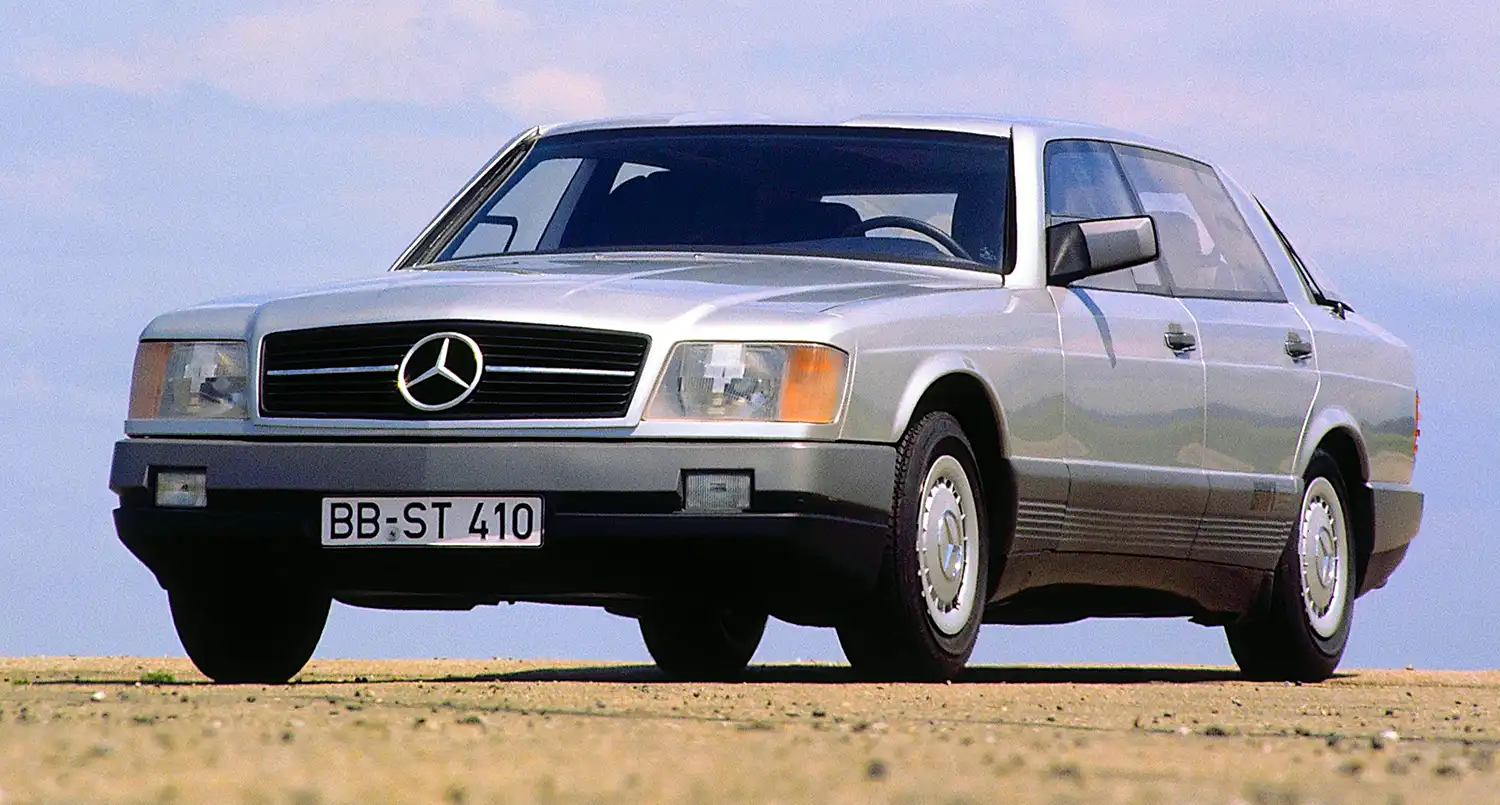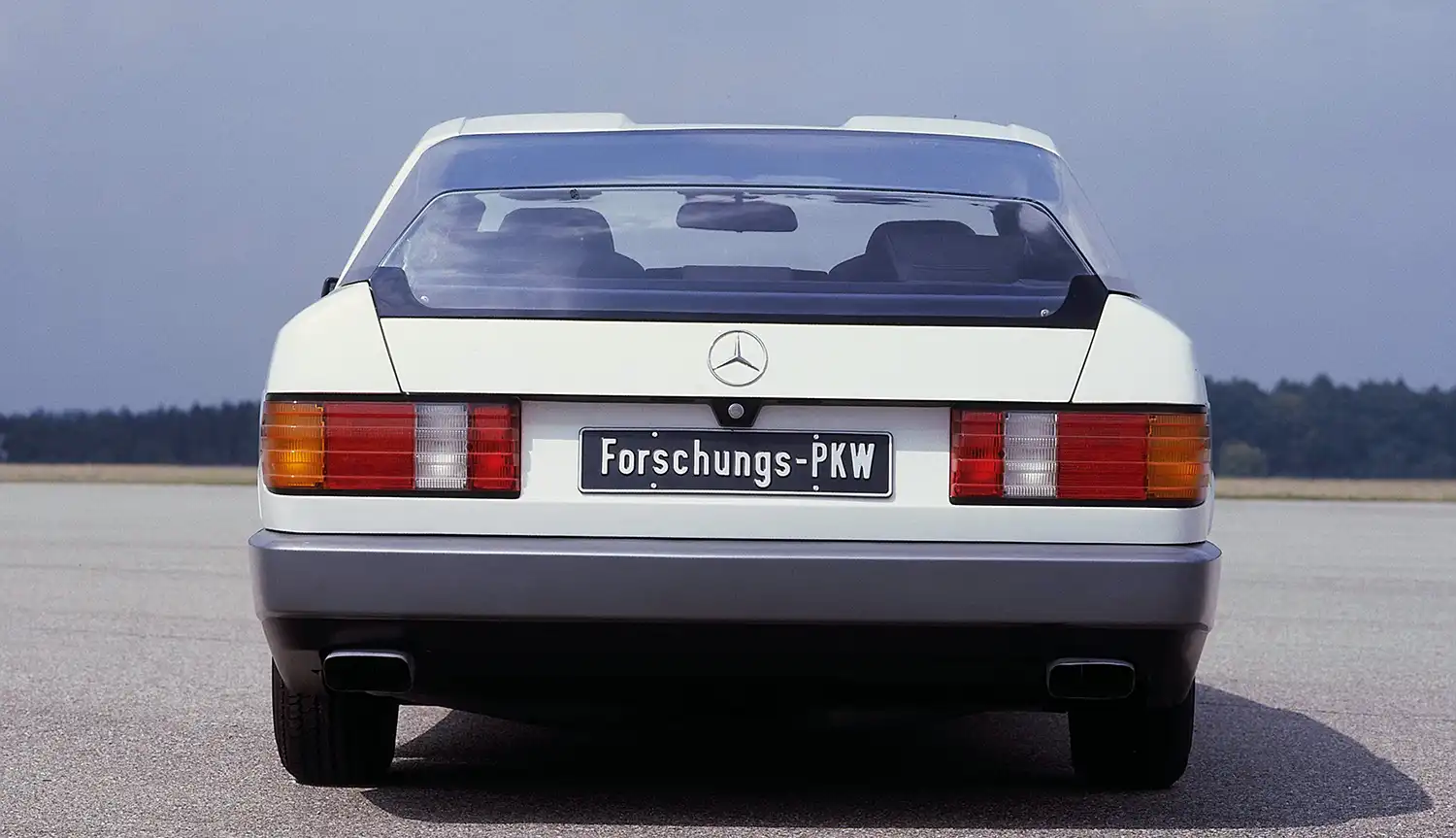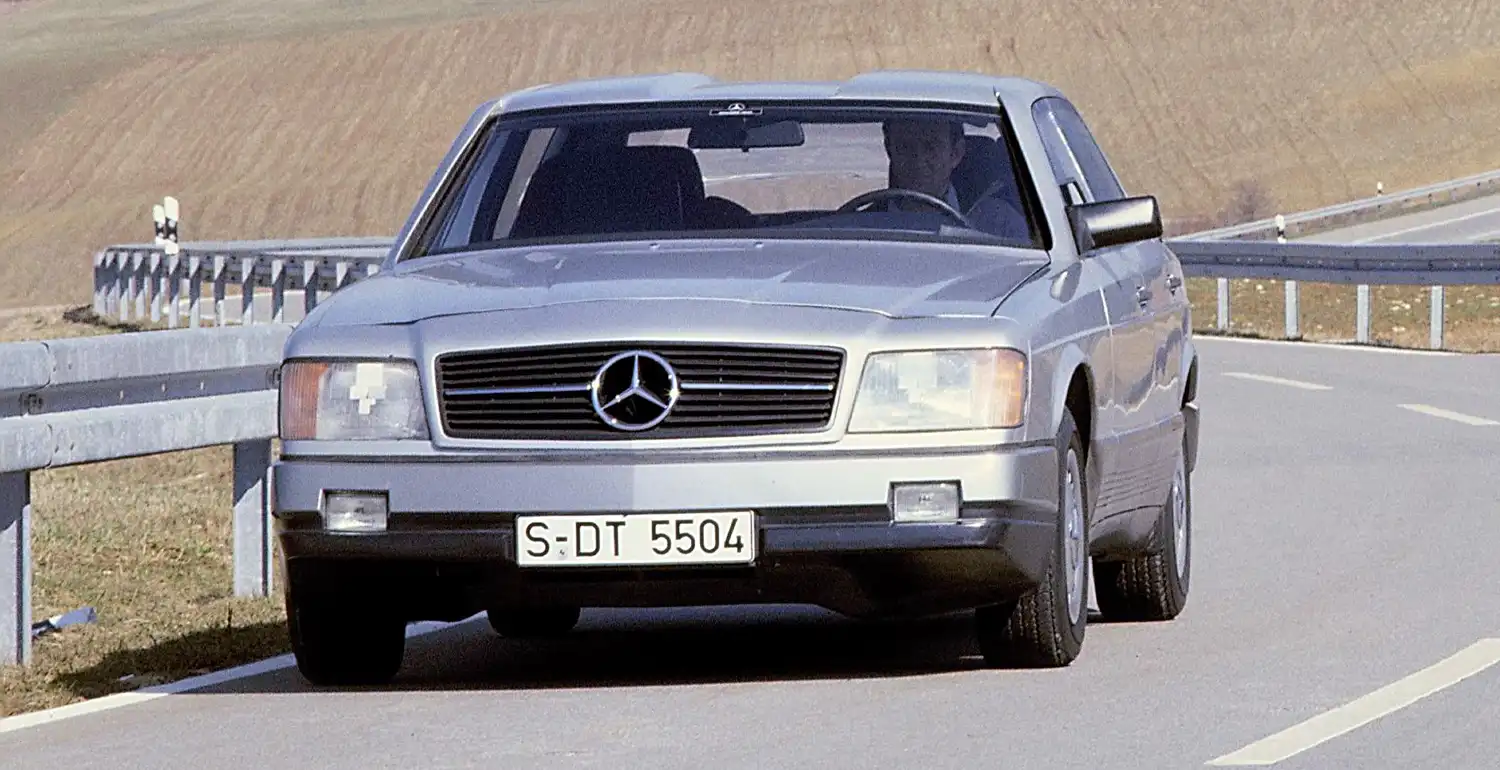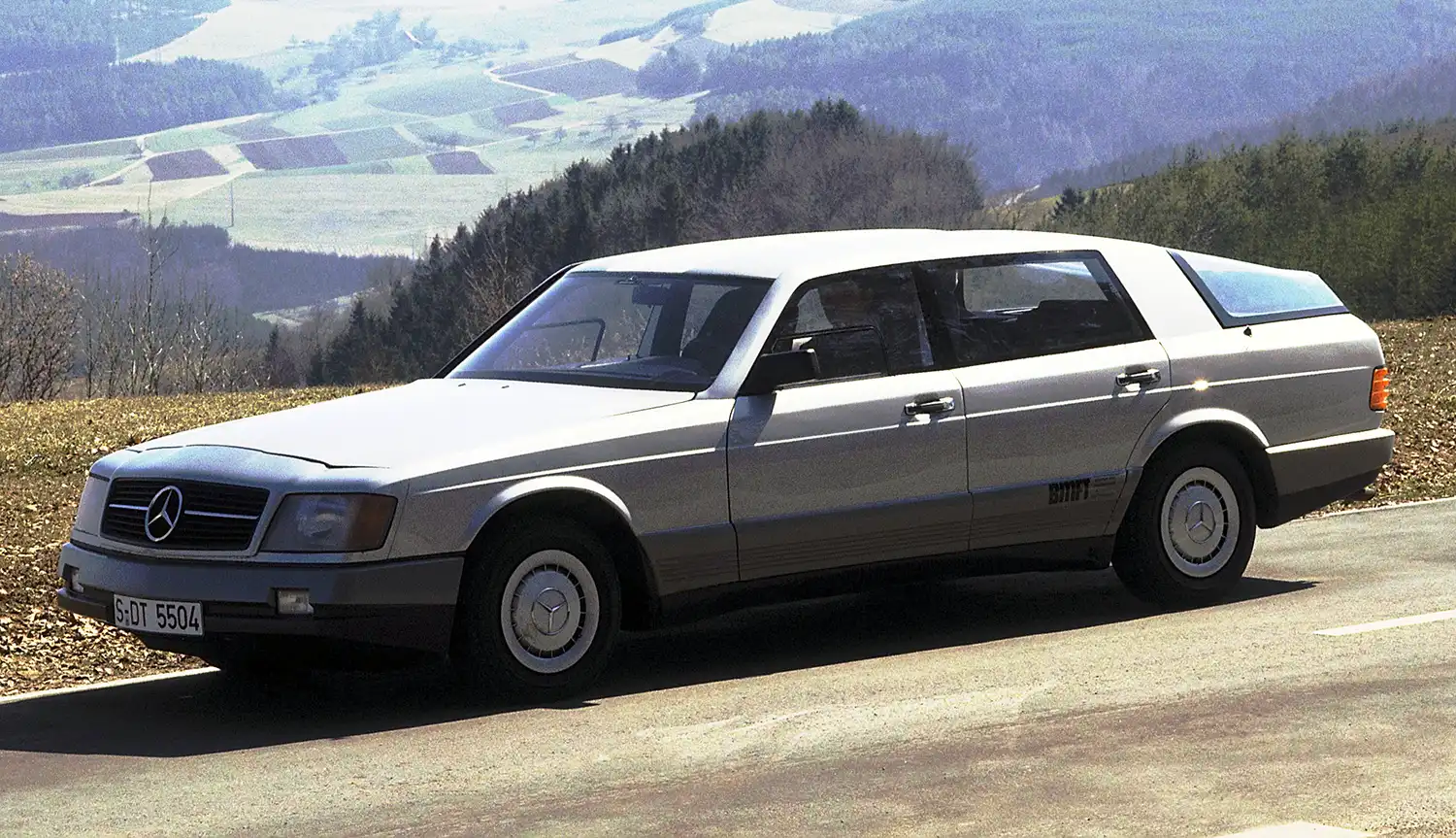
The Mercedes-Benz Auto 2000 Concept, unveiled in 1981, was not a production vehicle but rather a visionary exploration of future automotive technologies and design philosophies by the renowned German manufacturer. It did not have a direct predecessor or subsequent generations in the traditional sense of a production car line. Instead, it served as a rolling laboratory and a public statement of Mercedes-Benz’s forward-thinking approach to efficiency, aerodynamics, and alternative powertrains in an era marked by increasing awareness of fuel consumption and environmental concerns. This concept car was a standalone project, intended to push the boundaries of automotive engineering and provide insights that could be incorporated into future production models across the Mercedes-Benz range. Its impact lies in the innovative ideas it presented, rather than in a lineage of evolved versions.
The primary engineering focus of the Mercedes-Benz Auto 2000 Concept was on achieving significantly improved fuel efficiency through a combination of advanced aerodynamics and alternative powertrain options. The car’s sleek, low-drag body was meticulously shaped in wind tunnels to minimize air resistance, a crucial factor in reducing fuel consumption at highway speeds. To explore different avenues for propulsion, Mercedes-Benz equipped the Auto 2000 with multiple interchangeable engine options. These included a sophisticated 3.8-liter V8 gasoline engine featuring cylinder deactivation technology, which could shut off cylinders under light load to conserve fuel. Another option was a 3.3-liter inline six-cylinder diesel engine, known for its inherent fuel efficiency. Perhaps the most radical powertrain explored was a gas turbine engine, showcasing Mercedes-Benz’s interest in unconventional propulsion methods for the future. The concept also incorporated advanced electronic systems for driver information and vehicle control, demonstrating the increasing role of electronics in automotive design. The suspension and chassis were engineered to provide a comfortable yet stable ride, consistent with Mercedes-Benz’s reputation for refined driving dynamics.

Power and Performance: The Mercedes-Benz Auto 2000 Concept was designed as a research vehicle to test various powertrain technologies rather than to achieve specific performance figures in the traditional sense of a production sports car. However, the engine options it featured provided insights into potential future performance characteristics. The 3.8-liter V8 gasoline engine with cylinder deactivation was projected to offer a balance of strong performance when all cylinders were active and improved fuel economy during partial load operation. Its power output was substantial for the era, though precise figures for the concept car might vary from potential production versions. The 3.3-liter inline six-cylinder diesel engine focused on fuel efficiency and offered respectable torque for comfortable cruising. The gas turbine engine, while a more experimental option, had the potential for high power output and a unique driving experience, although it also presented challenges in terms of emissions and noise. The concept car’s emphasis was more on demonstrating the viability of these different powertrains and their impact on fuel consumption and emissions rather than on outright speed or acceleration numbers.

The interior of the Mercedes-Benz Auto 2000 Concept was designed to showcase a comfortable and spacious environment for passengers, despite the car’s aerodynamic exterior. The focus was on creating a user-friendly interface with advanced electronic displays providing driver information. The design aimed for a modern and uncluttered aesthetic, reflecting the forward-thinking nature of the vehicle. While specific materials and seating configurations might have been experimental, the overall goal was to demonstrate how future vehicles could offer both aerodynamic efficiency and a comfortable, technologically advanced cabin for occupants. The emphasis was on ergonomics and the integration of new electronic systems to enhance the driving experience and provide relevant information to the driver.
The exterior design of the Mercedes-Benz Auto 2000 Concept was its most visually striking feature. The aerodynamic body was characterized by a low hood line, a steeply raked windshield, and a smoothly sloping rear end, all designed to minimize air resistance. The car lacked sharp edges and featured flush-mounted windows and smooth panel transitions to optimize airflow. The overall shape was a departure from the more angular designs prevalent at the time, foreshadowing the increasing importance of aerodynamics in future vehicle design. The concept explored different configurations, including variations in the rear end design, further emphasizing the focus on aerodynamic efficiency. Details such as integrated lighting and minimized protrusions contributed to the sleek and futuristic appearance of the Auto 2000.

The Mercedes-Benz Auto 2000 Concept from 1981 holds a significant place in automotive history as a bold and innovative exploration of future possibilities. While it never entered production, its advanced aerodynamic design, investigation of alternative powertrains like cylinder deactivation, diesel, and gas turbine engines, and incorporation of advanced electronics had a lasting impact on Mercedes-Benz’s future research and development. Many of the ideas presented in the Auto 2000 Concept, particularly the focus on fuel efficiency and aerodynamic optimization, became increasingly important in subsequent decades and influenced the design of later Mercedes-Benz models. The concept serves as a reminder of Mercedes-Benz’s commitment to innovation and its willingness to explore unconventional technologies to shape the future of the automobile. It remains a fascinating example of automotive foresight from the early 1980s.
Summary
- The Mercedes-Benz Auto 2000 Concept was a 1981 research vehicle exploring future technologies.
- A key focus was on aerodynamic design for improved fuel efficiency.
- It featured interchangeable engine options: a V8 with cylinder deactivation, a diesel, and a gas turbine.
- The concept incorporated advanced electronic driver information systems.
- The interior aimed for spaciousness and a modern, uncluttered design.
- Its aerodynamic exterior foreshadowed future design trends.
- It served as an influential project for Mercedes-Benz’s future development.
Disclaimer: Information provided is for general informational purposes only and is based on available details regarding a concept vehicle. Specifications and features were experimental and did not necessarily translate to production models.
Source: Mercedes-Benz
AI Assistance: Gemini
